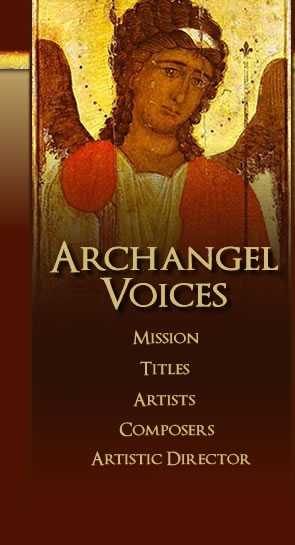
|
Title: Exaposteilarion: "Thy Bridal Chamber" |
|
Composer: Byzantine Chant, arr. A. Khalil |
|
About
the Music:
The Exaposteilarion is a very special moment in the Orthodox Matins service. Like the Dismissal Troparion or the Kontakion, it succinctly summarizes the chief event being celebrated, but also, in many cases, brings in the theme of "light" or "enlightenment." Hence, it is also referred to as "The Hymn of Light" svetilen in Slavonic, photagogikon in Greek. The exaposteilarion is frequently sung by a soloist or a group of soloists who are "sent out" (exaposteile) into the center of the church. Like the Byzantine Chant setting of "Behold the Bridegroom" (track 2 on this CD) this melody is rendered somewhat differently depending on whether a certain parish was established by Greek, or Lebanese or Romanian immigrants. This particular setting was set to a typical Greek-tradition melody by our friend and colleague, Dr. Alexander Khalil, a noted researcher in the performance practice of Byzantine Chant. The composer writes: The melody I used for this piece is not my own. It is one of the many paradigmatic melodies found in the tradition of psaltiki, or "Byzantine Chant." Constructing a melody which is true to the Greek language original, while also being true to the accent pattern and syllabic placement of the English language translation can be challenging. In this case, my approach was to analyze syllable accent patterns across seven hymns as recorded in Chourmouzios' Eirmologion, a book of neumatic scores printed in 1825. From these seven hymns, I was able to find melodies that fit exactly the accent patterns of the English translation and thus arrive at a version of this hymn in which language and melody maintained their traditional relationship in psaltiki. Psaltic notation is not usually written out in full detail. A chanter must recognize the thésis, or melodic formula, and then interpret it according to oral tradition. So, writing this new melody out in staff notation I added a traditional melodic interpretation. This melodic style of this hymn, in this case, is arga, or slow/elaborate. Thus you might notice the "extended cascade," a stepwise sequence that closes several phrases. |
|
The sheet music can be downloaded here.
|